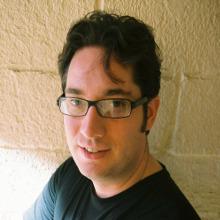Superconducting Super Collider
(Inside Science) -- “In October 1993 the U.S. Congress terminated the Superconducting Super Collider (SSC) with an estimated price tag that went above 10 billion dollars. The SSC was designed to do a pretty wide range of physics goals, but at the very core of it was to find the Higgs boson. Ever since, this project has been referred to as ‘water shed’ in the history of science, in the history of physics especially, and that the funding for high energy physics [has been] either flat or declining ever since,” said Michael Riordan, adjunct professor of physics, University of California, Santa Cruz.
Riordan also stated, “One day director emeritus of Stanford Linear Accelerator Center (SLAC), Wolfgang Panofsky, best known as "Pief", came into my office and said, ‘You know I think this was a bridge too far.’ I always often puzzled with what that meant, and finally resolved it years later when I realized that this was the title of a book about a disastrous allied campaign during World War II. But that really keyed my thinking about this project.”
According to Riordan, “the SSC was designed to understand, why do particles have mass? The theories generally had mass-less particles in them and they had a high degree of symmetry. You had to break that symmetry down by giving particles mass, and there was a mechanism called the Higgs mechanism that did this in a very natural way, but it required the existence of a particle called the Higgs boson, and nobody could really specify the mass it had to have.”
“There was a large range of masses, ranging from about the mass of a proton, up to about a thousand times the mass of a proton, in which it might occur. So successive particle colliders and accelerators went looking for this. The SSC was built to be sure that they could either find the Higgs boson or find some other phenomena responsible for why particles have mass,” stated Riordan.
“The SSC was understood that it would have to be a multibillion dollar project. Everything the community had done before that had been hundreds of millions of dollars -- that had been evaluated in 1990 dollars -- this one was clearly going to be over 10 billion dollars. When you get to those kinds of numbers you have to bring in partners. In this case it was the Texas politico's members of the military industrial complex. To them it was a high-tech jobs project, and that was the image that they projected in Congress. And that is like the kiss of death, especially when you have a multibillion dollar project that is growing seemingly out of control -- pressing on many other projects, not just science projects, but also water projects, in various districts throughout the nation. Was this project too big for the U.S. high energy physics community to embrace?” said Riordan.
“In general, I think it was. The SSC was indeed a bridge too far,” concluded Riordan.

